Beyond Vision, Sensing Takes on the Physical
Working in hardware and software for the last decade has opened up my curiosity and interest about sensors and what they have enabled our everyday inanimate objects to be. Embedded in our everyday devices, these sensing bits create layers of information to interact with. While sensors continue to become smaller and faster, the limitations for the types of interactions they provide remain limited. When we look at human sensing capabilities, it is quickly apparent that our sensory interactions with the world span far beyond vision. We can smell, taste, sense proprioception, comprehend ambiently, sense peripherally and in a group. When I look outside of the human and turn to other living things — the plants and insects I see on a hike in the California desert, the microorganisms in my fermented foods, my neighbor’s cat who wanders in the neighborhood – I see how crude our sensing technologies in hardware and software are. Comparing a car to termites reminds me to stay humble.
At the molecular level, how do living things sense and interact with the chemical world? The foods and toxins that organisms are attracted to and repelled from? Smells, flavors, hormones are chemicals. They are molecules occupying space. Sensing these molecules is a physical interaction, and biology becomes crucial aspect of that design, uniquely able to detect molecules with incredible sensitivity and precision. I began my residency with this frame of mind.
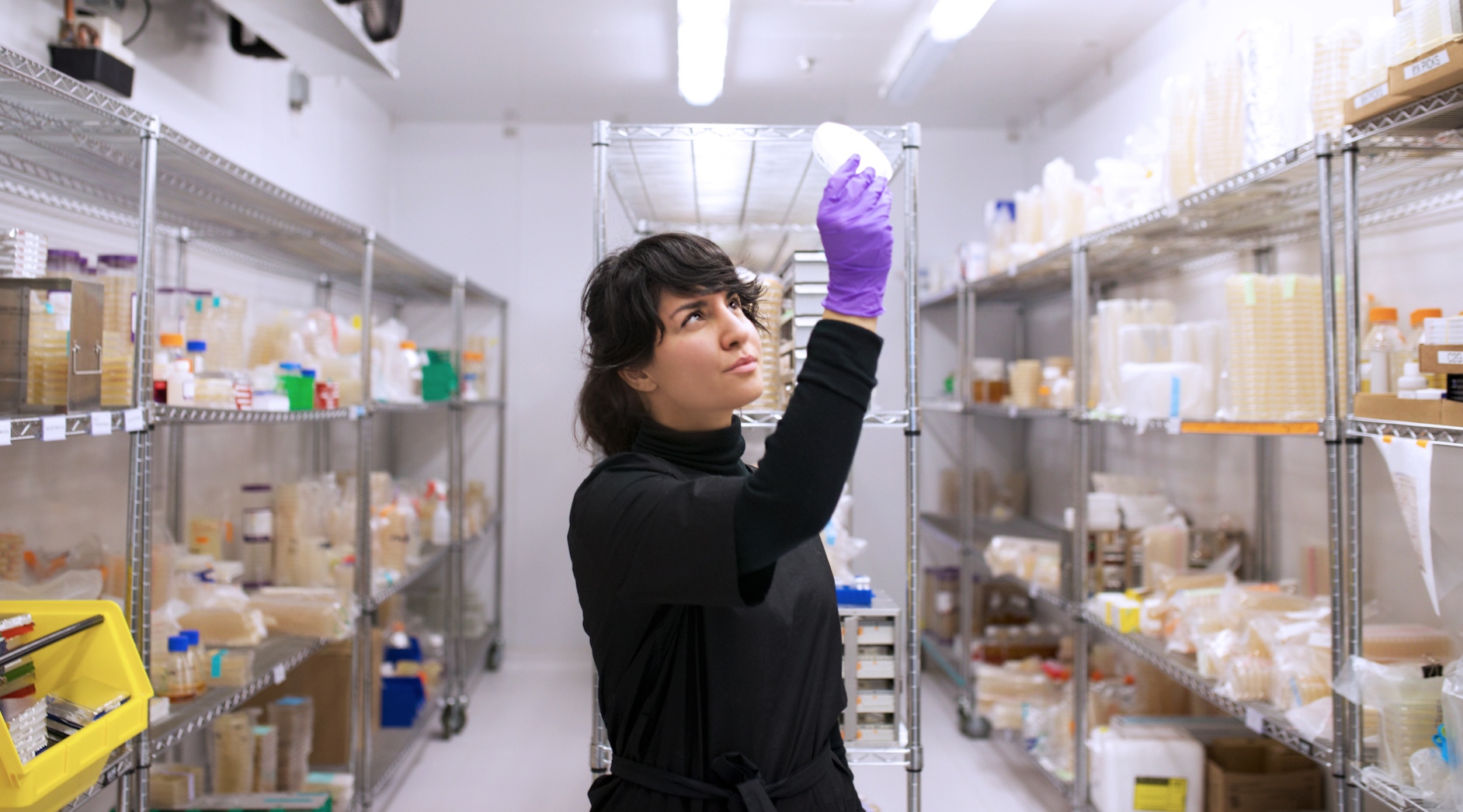
A Biosensor Anthology | Making the Invisible Visible
Biosensors are invisible to the naked eye. Because their scale is so small, they require scientific apparatus to view, capture, and interact with. I made it an important part of my process to learn from the scientists at Ginkgo by listening and sharing my way of understanding as we used different language and terminology to communicate similar ideas. To my surprise, the language around software was easily understood and provided a parallel in the two fields of computing and synthetic biology:
inputs / outputs
trigger / feedback
sensing / reacting
While I am critical about the cross over of metaphors from computing to biology, I found it a fast way to build trust and communicate clearly with the experts. Through what felt like endless conversations with scientists and engineers at Ginkgo, I compiled a BioDesign Dictionary a place where I would store new terminology I came across.
As I began to list, write and research, I discovered that most often biosensors are proteins that sense a chemical molecule. Although there are other types of biosensors that sense physical changes such as pressure, changes in the cell wall, or movement, I decided to focus on biosensors that can detect chemical molecules.
“If there is a chemical in nature, there is a biosensor for it in nature.”
-Ginkgo’s Head of Selections and Strain Improvement, Nikos Reppas
The notion of learning from nature and designing new biosensors is powerful, however it doesn’t mean it is possible to do so in a matter of months. I began to explore the scientific literature, and learned to work with biosensors that Ginkgo engineers used in the foundry. As I collected scientific papers and worked with the Ginkgo scientists, I built an inventory of biosensors, a short taxonomy from a perspective of a designer who is interested in sensing.



The way a protein and molecules senses the presence of each other is by fitting in to one another, physical contact, like a key and lock. Sensing in this case means for a molecule to fit into a protein; the geometry and topology define the interaction.
“The geometry and topology define the interaction.”
Inspired by the apparatus that scientists use to view, modify and ultimately work with proteins, I wanted to interact myself with these invisible things. I learned basics of PyMol software and worked with the scientists in protein engineering teams to give form to the intricate topological shapes that so defined the sensing. Although this exercise felt more like gathering and collecting, it helped me understand how detailed and unique each sensor is.
Paper as Interface | Material Intelligence
I strived to embody biosensors in a medium that is familiar. I researched various materials and found that paper was interesting to work with for several reasons. Paper absorbs water – in life sciences, water matters. Paper can be flat packed and shipped. Paper is lightweight and affordable. Paper comes in variety of colors, thicknesses, and textures. But more than its material properties, paper has cultural and scientific historical significance that felt relevant in sensing and perception. Paper is a material we have used to sketch ideas on, externalizing our imagination. Paper is used to write on, to embed knowledge, to carry our ideas, instructions, stories, and agreements. Paper serves as a cultural vessel that builds societal exchanges of thought. From a scientific historical perspective, paper has a legacy for “sensing”. Paper has been used as a tool for diagnostics, disease detection: Universal pH Tests, Urine Tests, and Pregnancy Tests.

Experts in paper based biosensing diagnostics, Keith Pardee and a team at the Wyss Institute for Biologically Inspired Design at Harvard have been working on cell-free methods to embed genetic machinery in paper, including biosensors that can act as diagnostics or other useful low-cost sensing devices. The concept of cell-free sensors inspired me since it meant that there are no living organism, it enables me as a designer to take the paper embedded with biosensors outside of an enclosed laboratory. It also meant that to “activate” the sensing interaction it would require to “add water”.
While most paper diagnostics come in a form of of a strip, held on one side, dipped on the other, I was eager to explore new affordances and interactions in this space. And turned out, both Wyss Institute and Pardee Lab were excited about that as well. I made a trip to the University of Toronto to visit Keith and we discussed several ways I could work with paper and explore biosensing. I also visited the Wyss institute and talked to experts in synthetic gene networks and paper intelligence. In these visits I learned that with cell-free paper systems, physical contact was important. It is harder to sense molecules in air through paper.
Gaining knowledge in this area of intelligence, I began to prototype intricate affordances for wearable paper sensors. This was something I could sketch without embedding the sensors in, to explore interaction and form at the human scale.


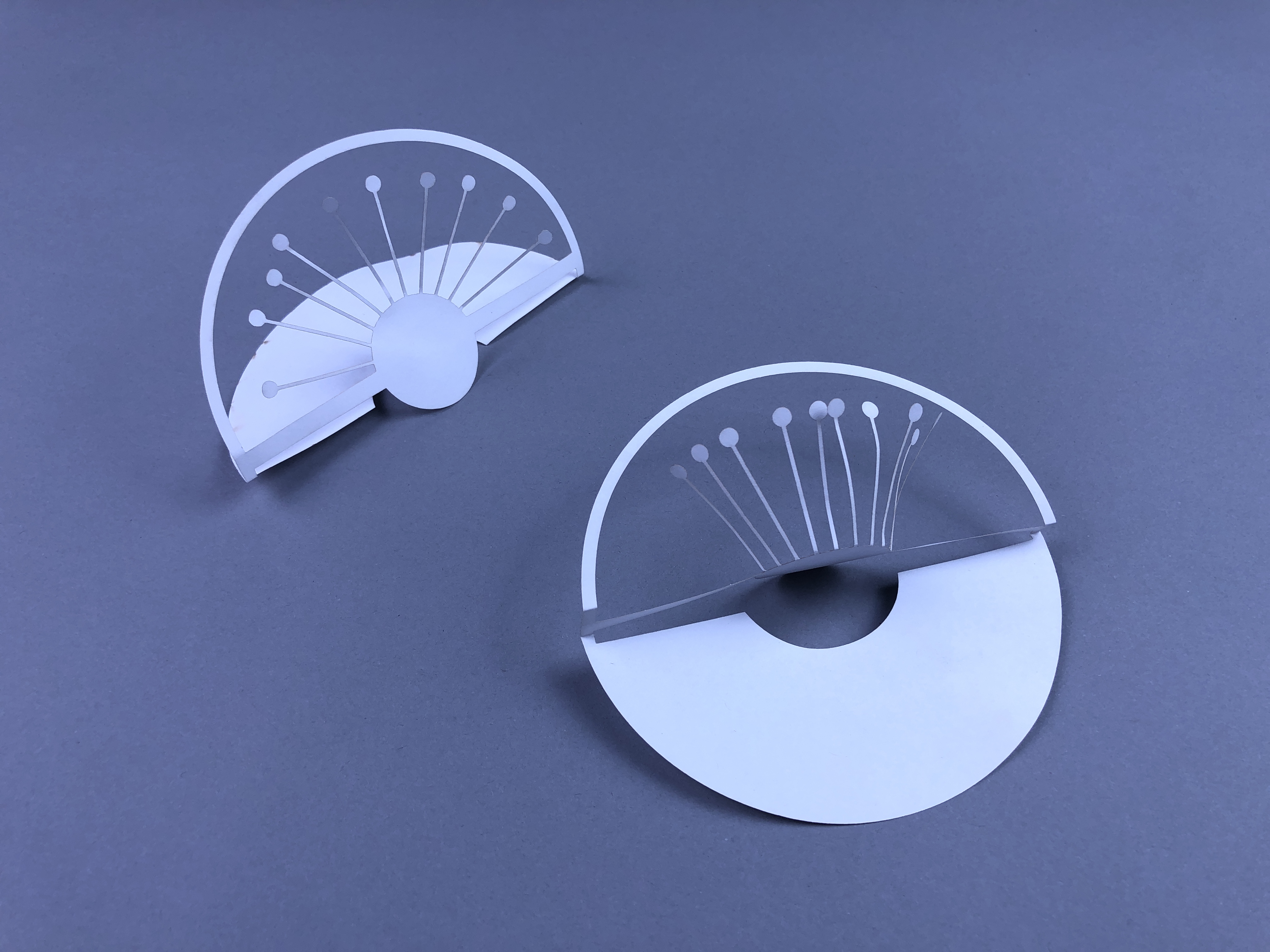
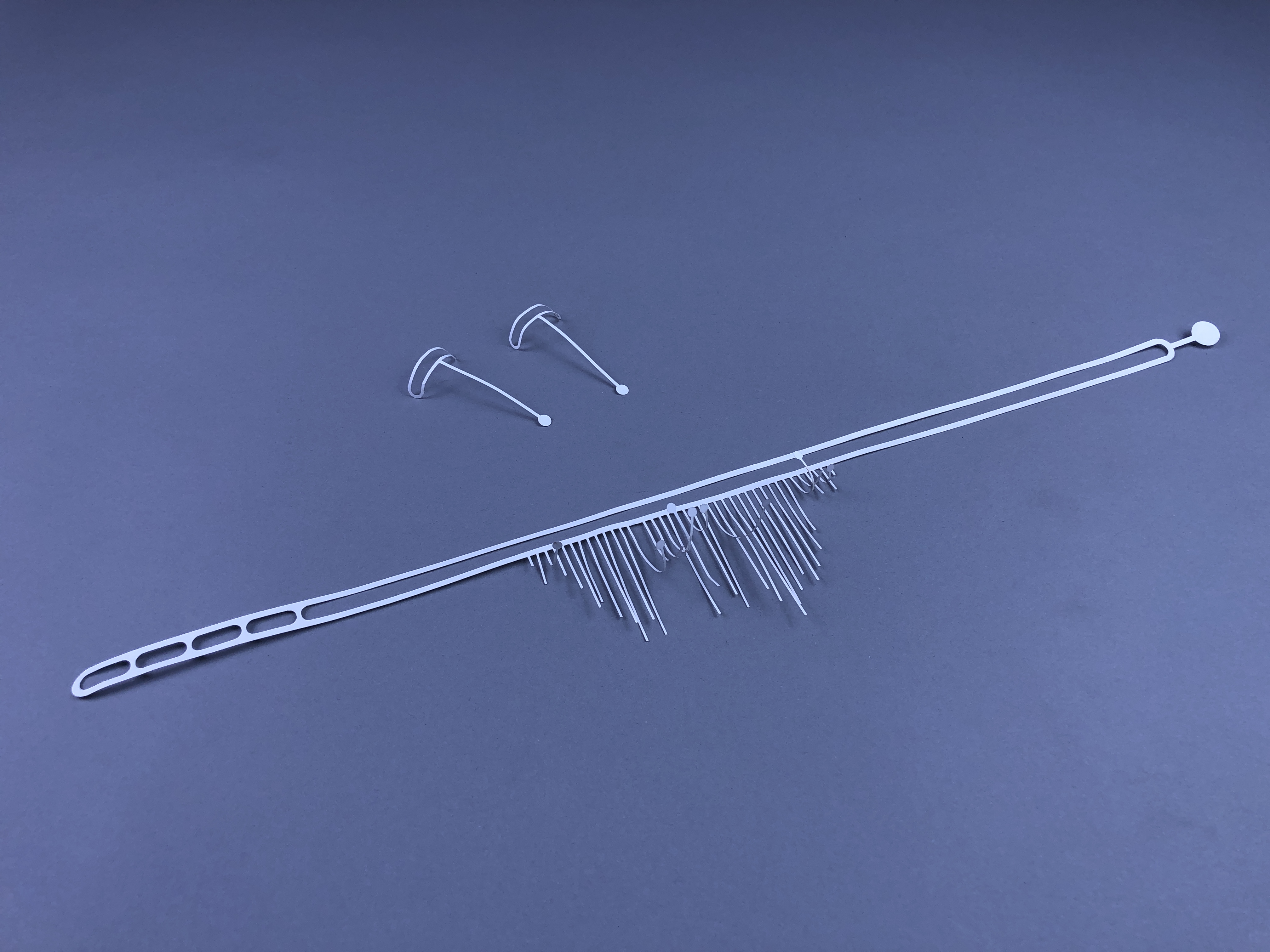
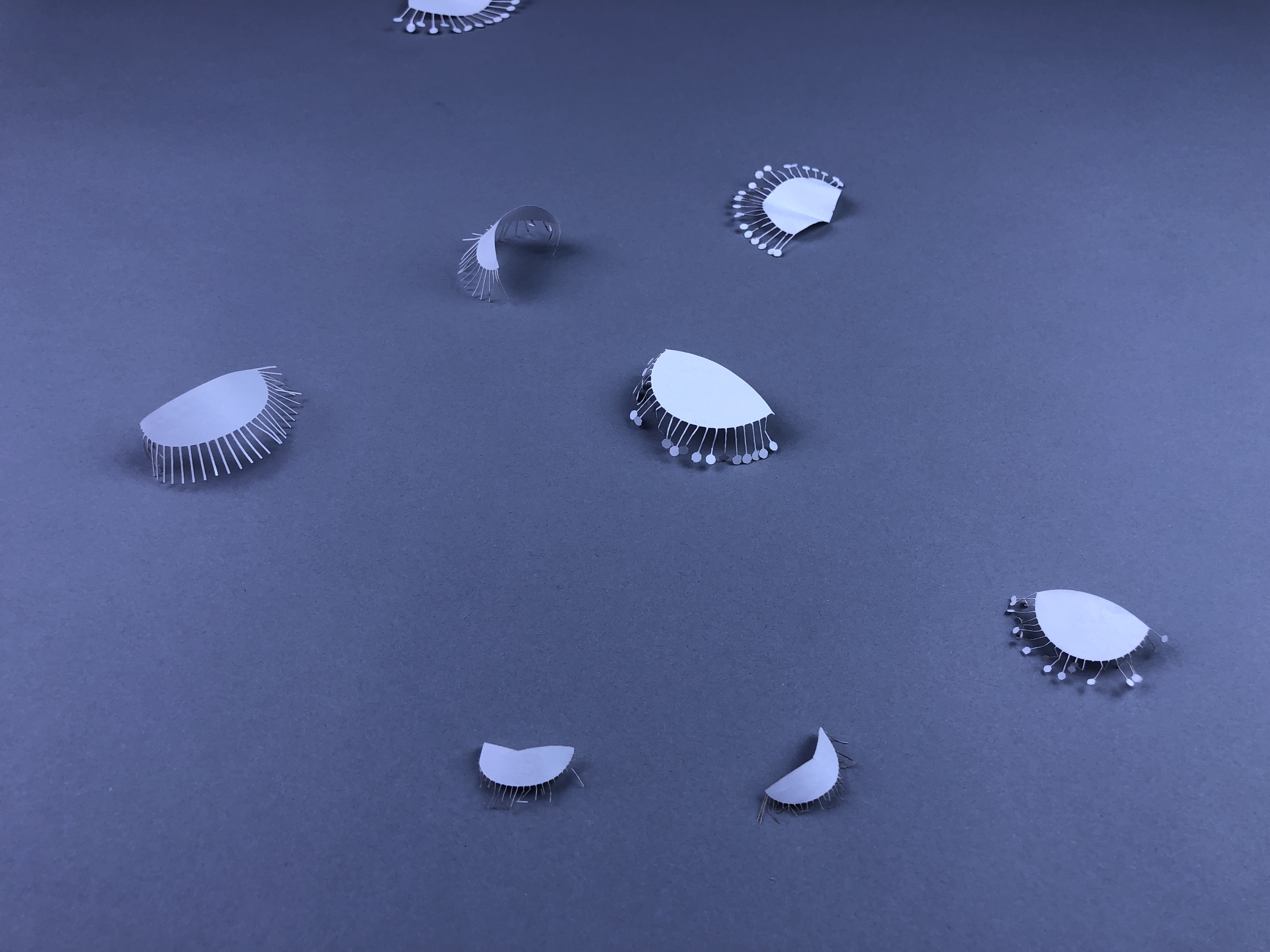
Micro Organism with a Nose | Smell Biosensor
While sketching physical interactions and interfaces helped me explore ideas, I wanted to see biosensing in real time and in action. To do this, we embedded two different biosensors in living organisms. This was the fastest and easiest way for me to experiment with sensing biologically. One of my biggest findings has been that Lab work and Design sketching may have similarities in process, but they have very different spaces. I had to split my time between being in the lab with safety attire, and in the studio where I could sketch object interactions rapidly. Time scales in biology are wildly different than that of computing. Life takes time – living things sleep, eat, grow. And there are not that many shortcuts to accelerate that process than a few standard practices.
“Life takes time.”
I worked with Joshua Dunn, Ginkgo’s Head of Protein Design and Creative Residency Mentor, along with other scientists to create the microbial interaction. We worked with a strain of yeast that Ginkgo engineers designed to biofabricate and produce a unique aroma. We fed the yeast with food that it likes and after two days of incubation, it was able to produce the smell we had designed it to create. On the same Petri dish we grew a strain of E. coli harboring an olfactory biosensor, giving the bacteria the capability to smell — a “nose”, if you will. The smell biosensor would sense the presence of the odor we asked the yeast to produce.
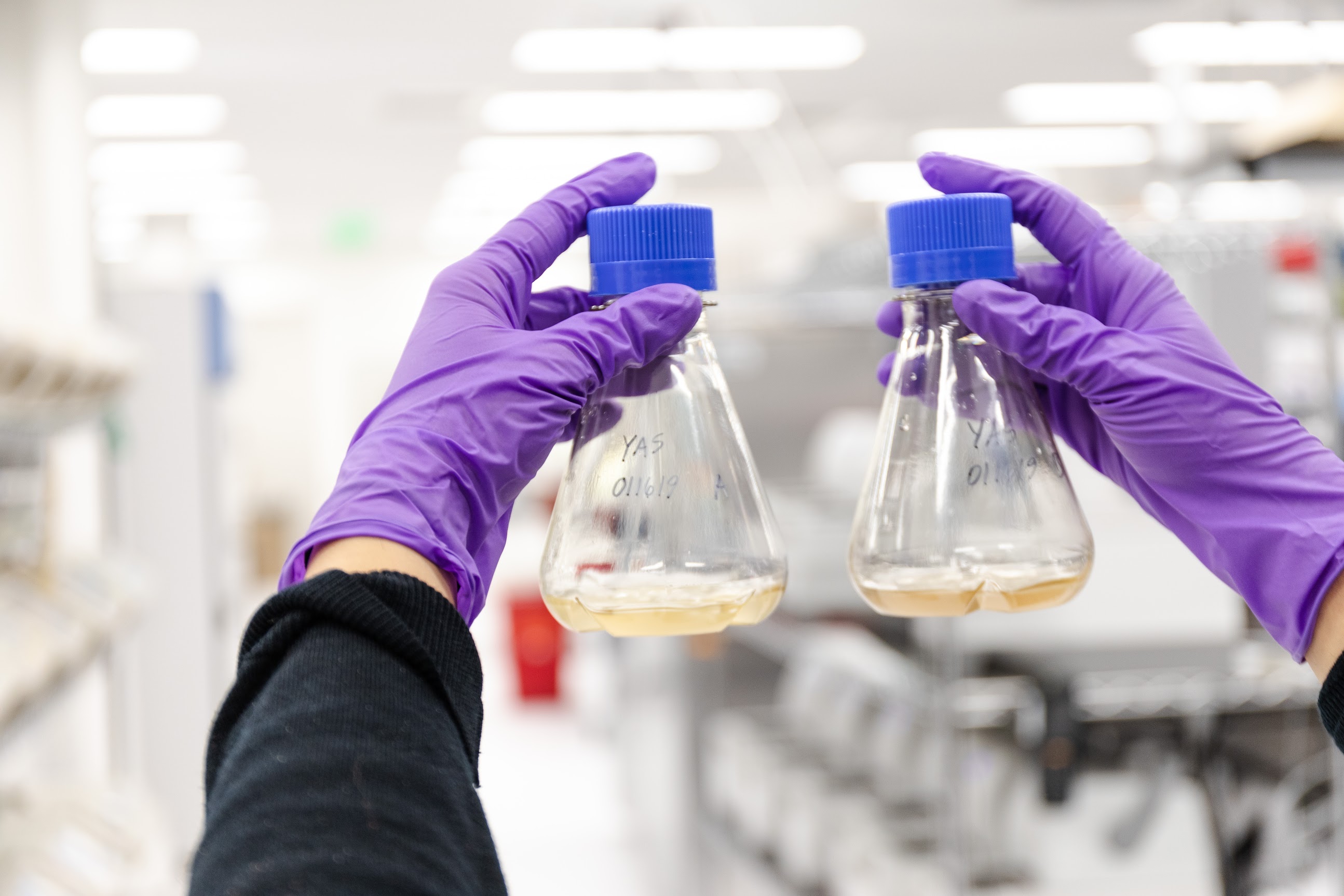
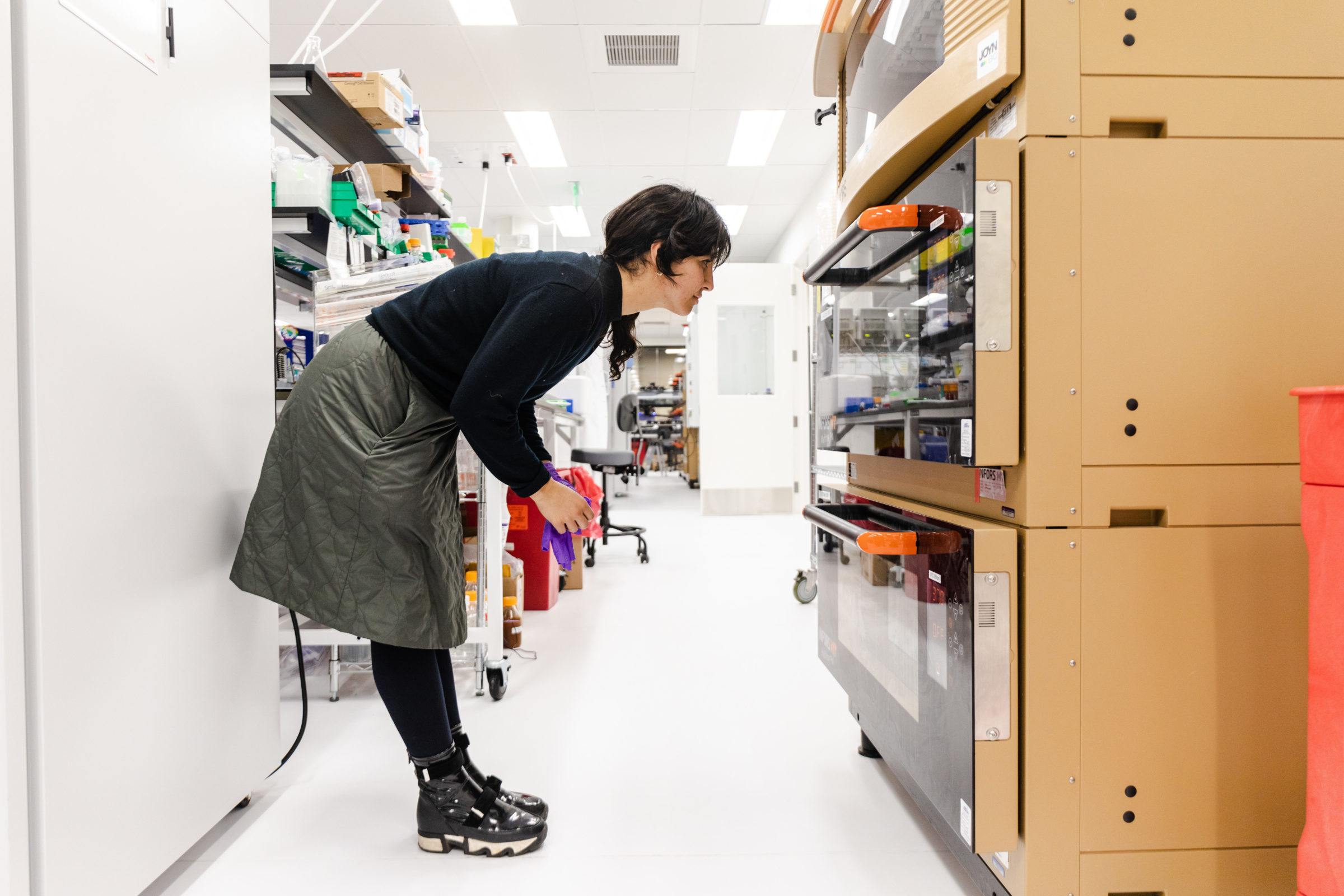
What happens after sensing requires another tool and different biological mechanisms, called “reporters” which define the output. I was surprised to find that the reporters available were quite limited to a few outputs such as color and fluorescence. While it may be sufficient for a scientists to use these outputs to detect a microbial interaction with naked eye, from a design perspective it stays limited to visual perception. I am eager to evolve this area of feedback in biology to open up experimentation for unique interactions as diverse as sensing in future work.
On our microbial interaction petri dish, the E. coli was designed to “output” the color blue once it smelled the odor. On this plate, the two newly designed microorganisms — the odorous yeast and the sniffing E. coli — shared a sensing interaction.
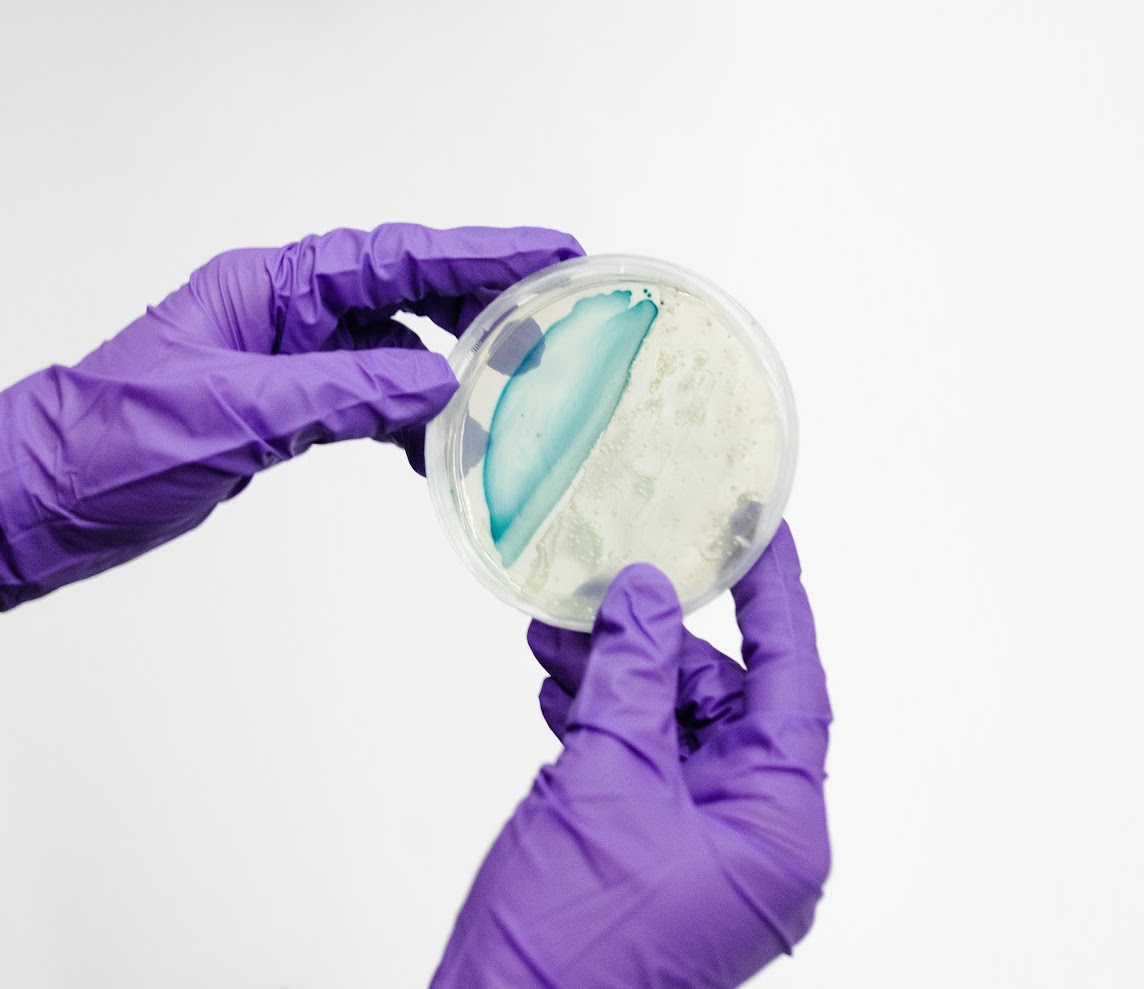
Josh and I continued to work together to do several iterations and prototypes of our microbial- sensing experiments. Other prototypes included flavor biosensors, distance interactions between two micro organisms, and embedding the sensors on Watman paper.

Museum of Sensing | Collective Sketches for Social Dreaming
As the field of biodesign matures and evolves, the area that I continue to find most interesting is the process of working with people from different disciplines. The creative process and the scientific process both need —just as bacterial growth— the right conditions to flourish: a supportive environment, good nutrition, plenty of water, etc. The conditions for sketching creative prototypes, ideation and futures for biology is one that allows for collaboration, ambiguity, and openness. The nutrition for sketching biology is passionate minds coming together, expression of what is an invisible idea in the mind to a visible sketch, be it physical, digital, flat, volumetric, interactive, or simply performed… when we can share our thoughts we allow the ideas to grow and take place in reality.
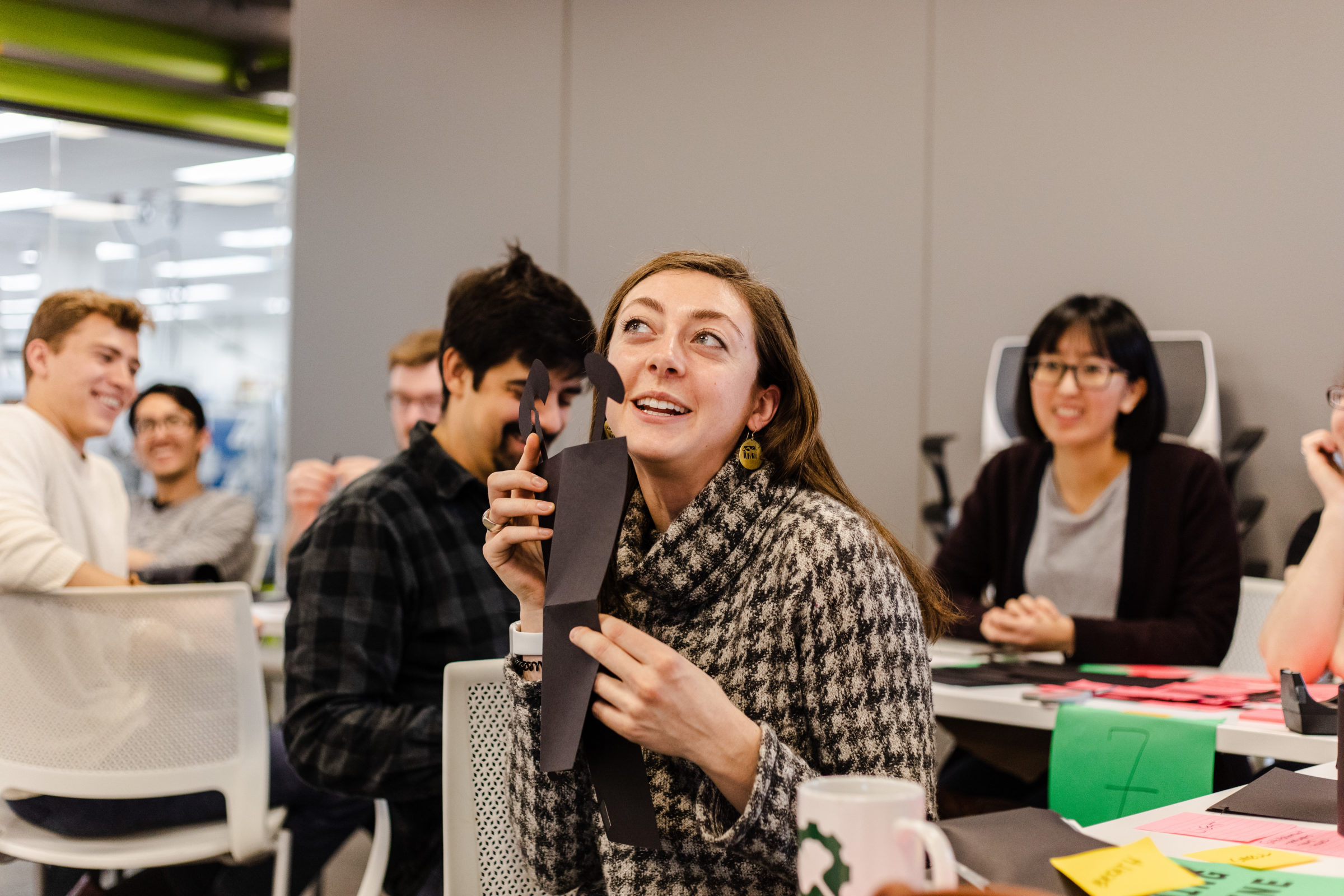
I shared two different styles of thinking, Brainstorm and Design Critique. One, a judgement-free space that allows everyone of all backgrounds, ethnicity, seniority or position in the company to contribute and have a voice through making. We established that when we don’t criticize or judge the ideas at their infancy, we breathe into them an expression. The other, participants were encouraged to constructively share feedback with suggestions and considerations. This space was about gaining perspective, checking for bits overlooked, and also about diversity of experiences and thought. Our upbringing and the environments we are situated in often define our point of view and if we are designing for the greater world, then it is helpful to get perspective and feedback often, especially in a field that will affect not only humans but all parts of life. Here we had space to talk about why an idea is desirable and undesirable, why it is good and bad, why it might make me afraid or make me fall in love.
As we got in to groups and sketched ideas together, we practiced social dreaming. When we think about biological sensing, what do we want collectively on our planet? What do we expect in our communities and as individuals? What biosensors are desired? And what kind of sensing is undesired? Our hopes and fears take on a shape to be visible in this space.
One way to capture these sketches of biological designs was to put them in a museum. I gave each Ginkgo member a tag where they would write about their newly sketched tools and what it sensed. As they gave the tags back to me I stamped them “ARCHIVED”, officially confirming their contribution to “The Ginkgo Museum of Sensing”. From the objects they brought initially from their homes tagged as 2019, to the objects they sketched for 2039, Ginkgo scientists’ visions and ideas were documented in “context of their body” as wearable and later mounted at Ginkgo Bioworks HQ as a collective memory of the biosensors to come.
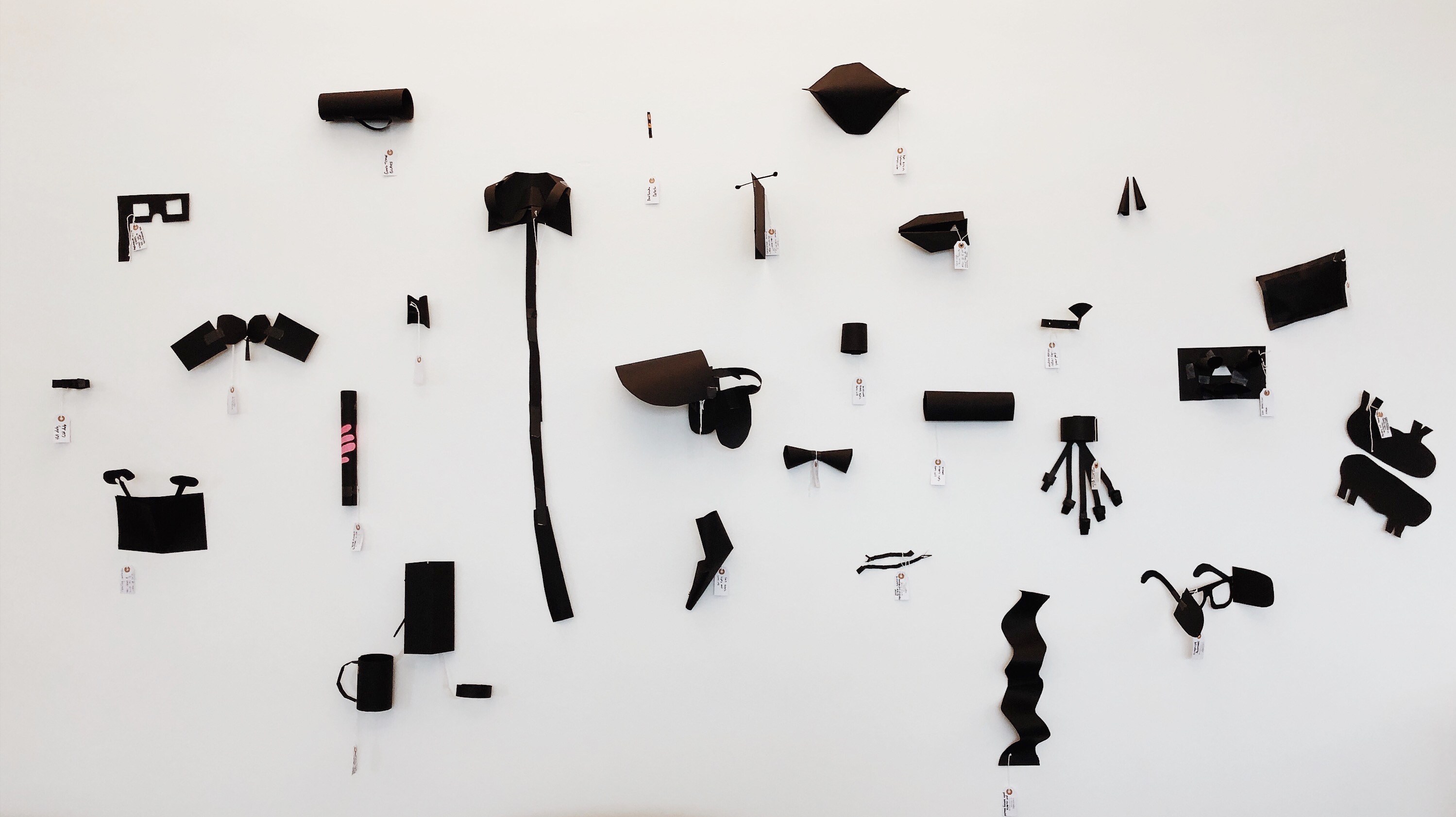
The In-between space of Provocations
This sort of thinking about critique and questioning the how, why, and who of decisions made about new technologies is an important part of my work on sensing technology. When it comes to biosensors and what is designed, brought in to market and the data that is collected and measured, new questions beyond usability and technical feasibility arise: Who decides? how is it decided? and how does the idea evolves from sketch to the complex socio economic world that is never devoid of political boundaries, geographically or otherwise?
I presented my thinking in biosensing at the 2018 Biofabricate Conference. You can find my talk here.
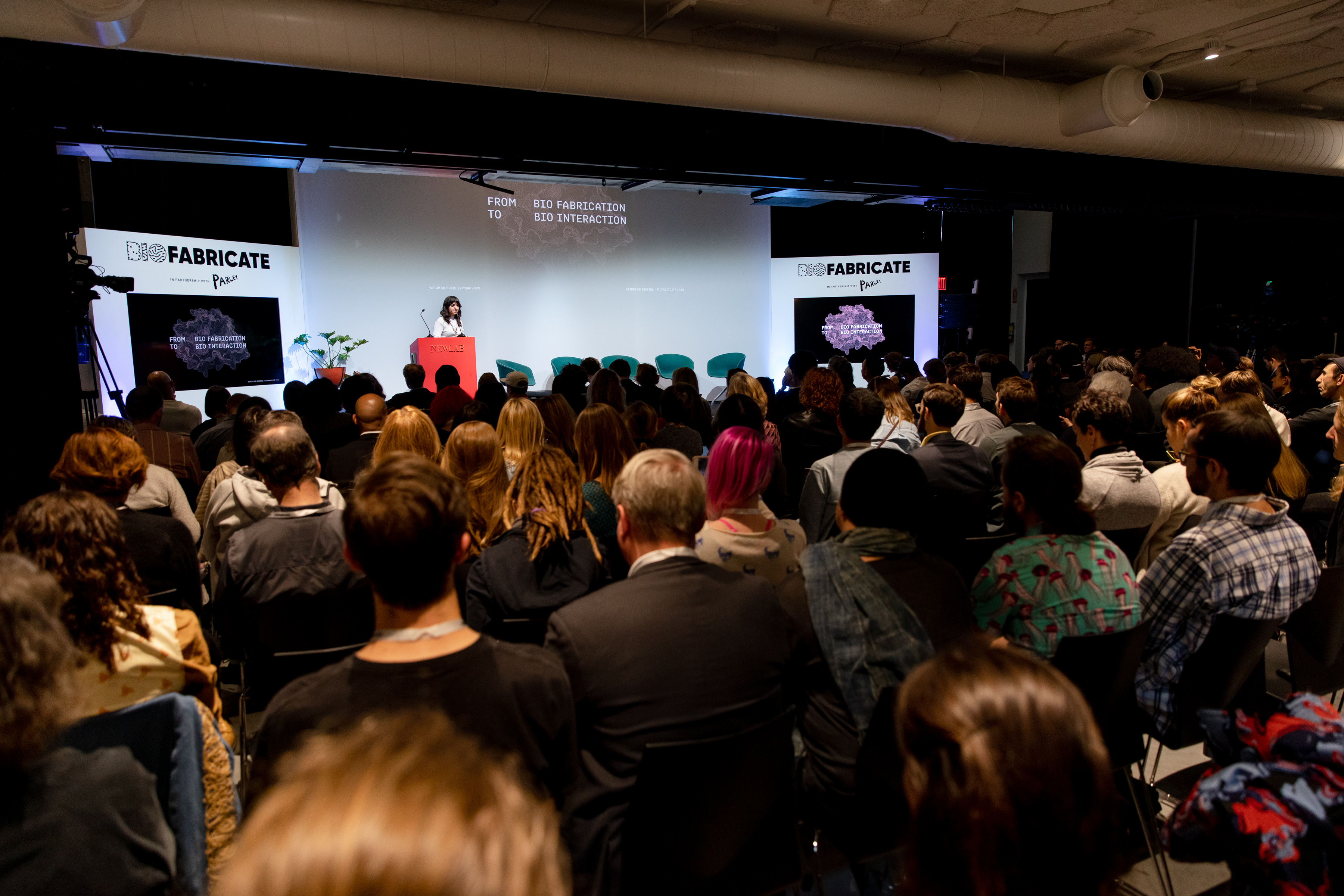
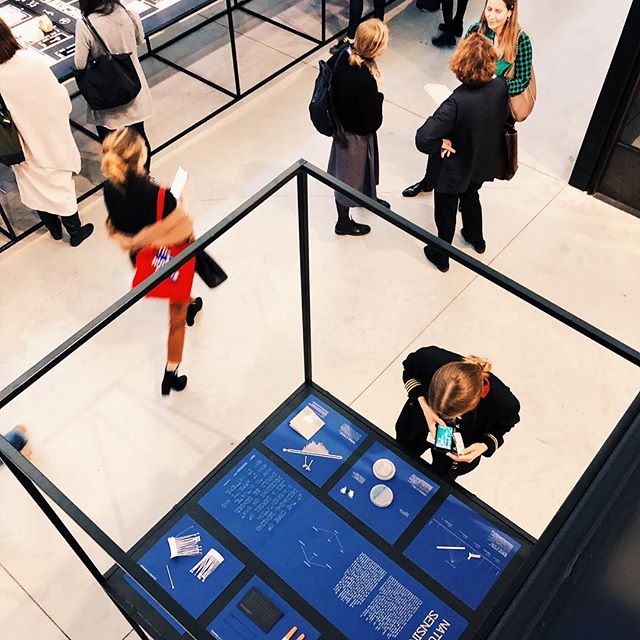
With Systems thinking and Platform Design in mind, I wish to share my knowledge and open up biosensing technologies as tools of expression, connection and communication. My time in the lab working with scientists at Ginkgo Bioworks, opened my eyes (and senses!) to working with some of the world leaders in biosensing and helped me dive deeper in this emerging field to recognize the opportunities and challenges first hand.
Three months not only flew by, but it felt like an intro to biosensors, a taste of working at the biological time scale and with living systems of nature that we are still understanding and learning to not use, but work with.
The most profound exercise at the residency was not focusing on design, or science, but rather at the in-between space that cultivates both. My terminology is now: Sketching in Biology, Brainstorming Ecology, Designing Lab Experiments. These grey areas provide potential for multiplicity of viewpoints, and nurture a collective thinking about the future. It’s a hazy border that cultivates healthy disagreements and ways to come to understanding, one that involves humans and other species and opens the door for plural thinking in design and science and ecology.
